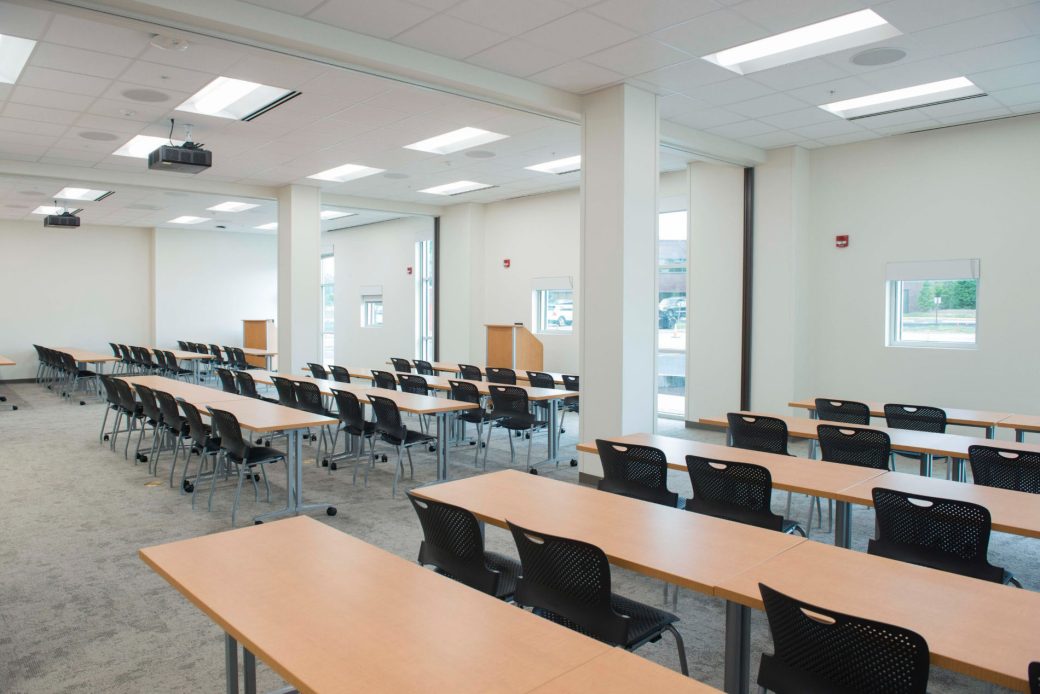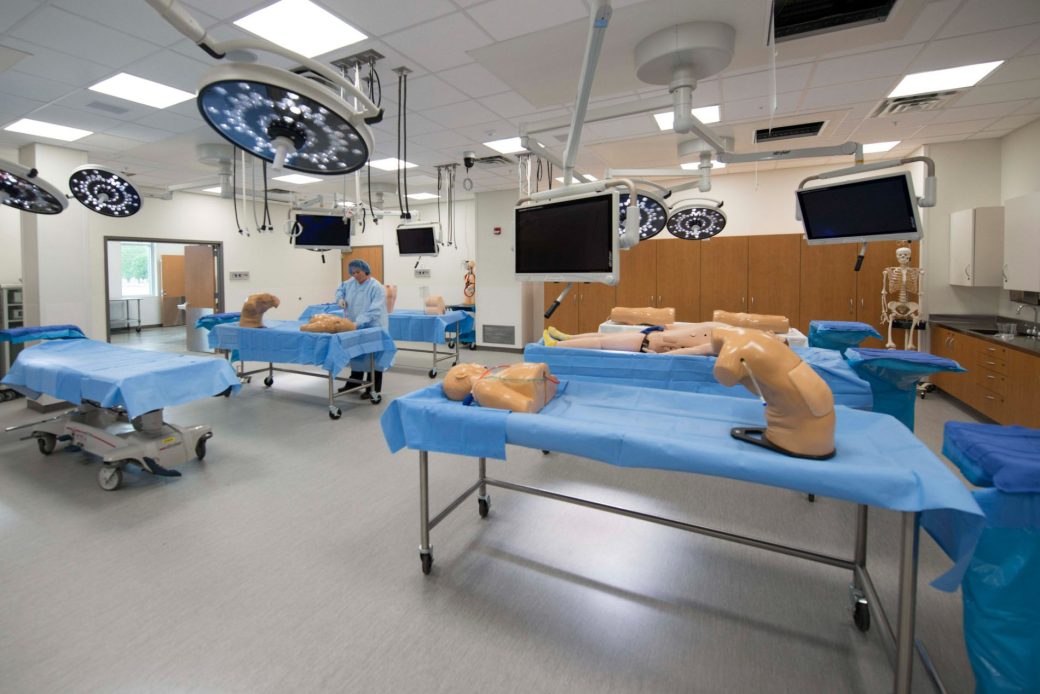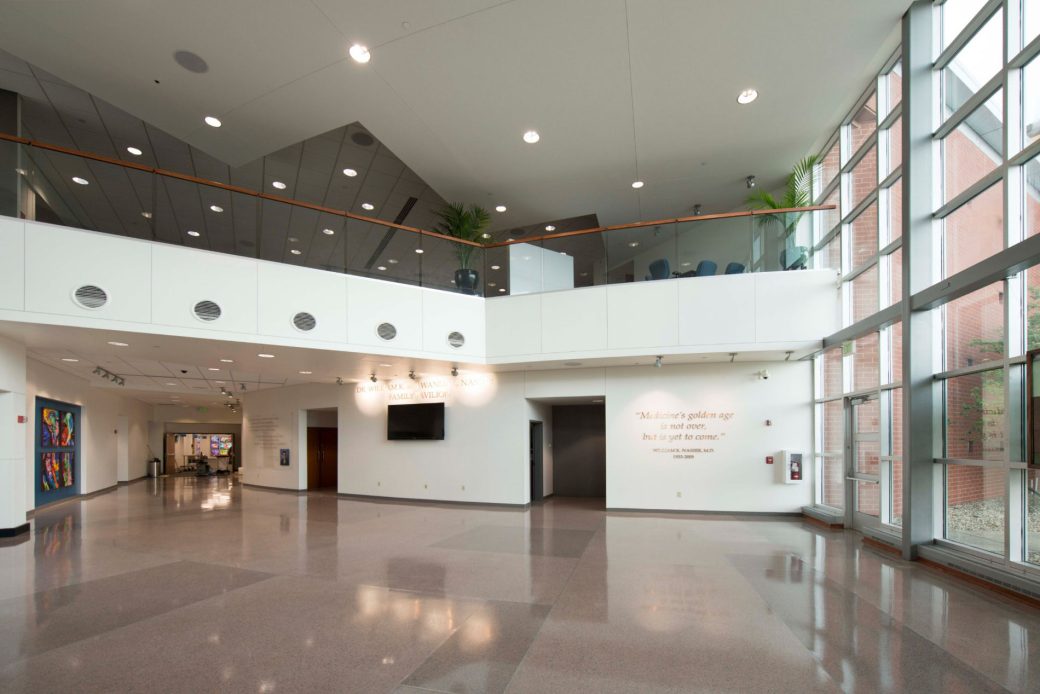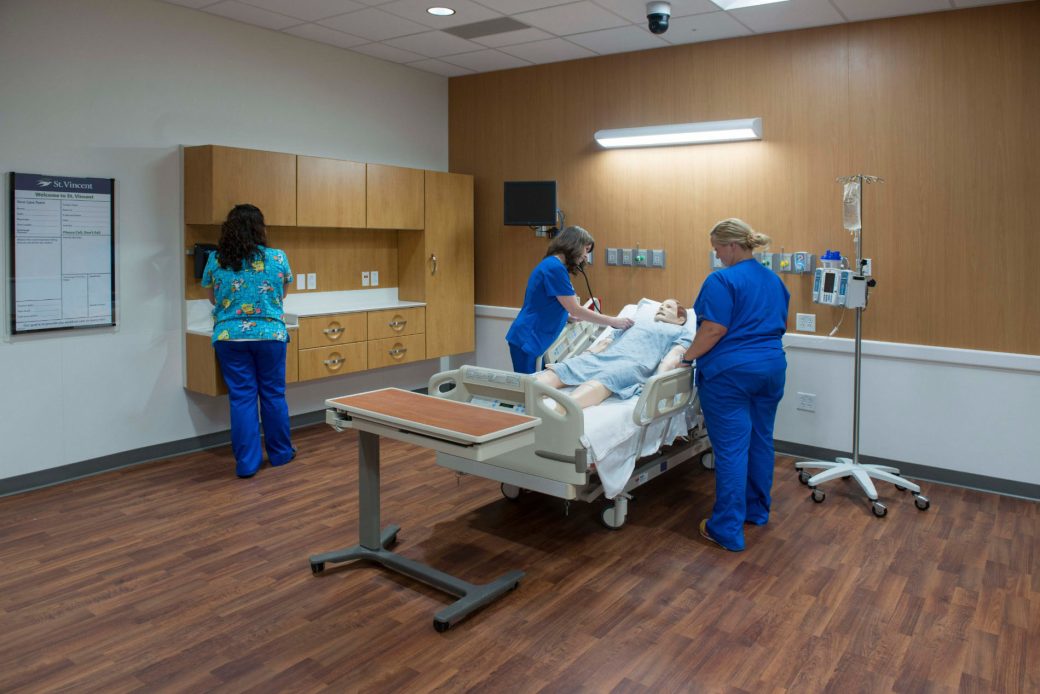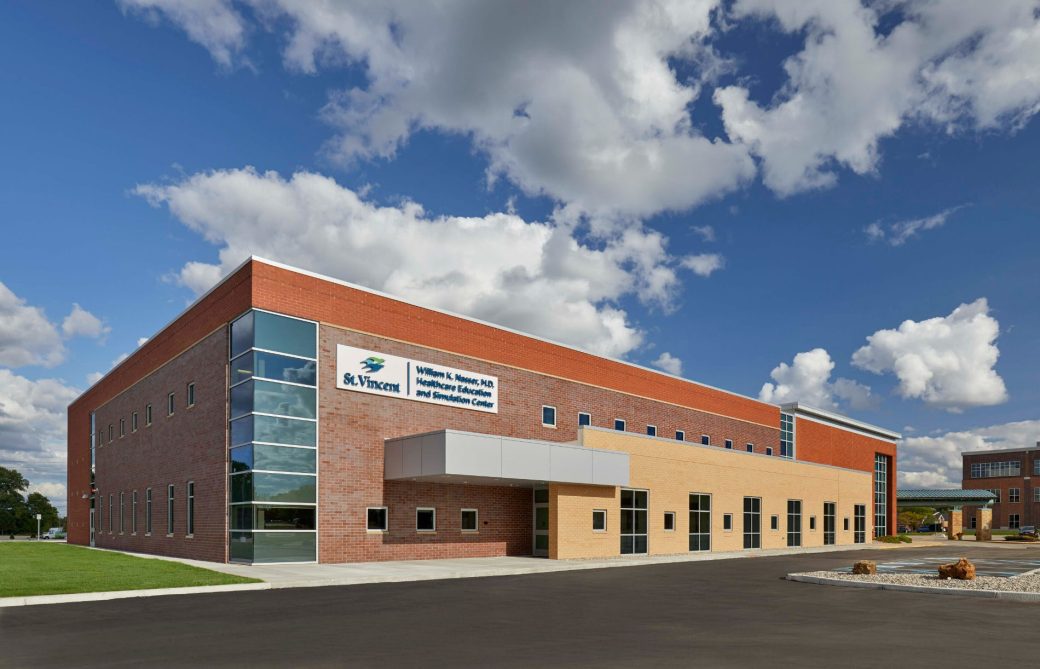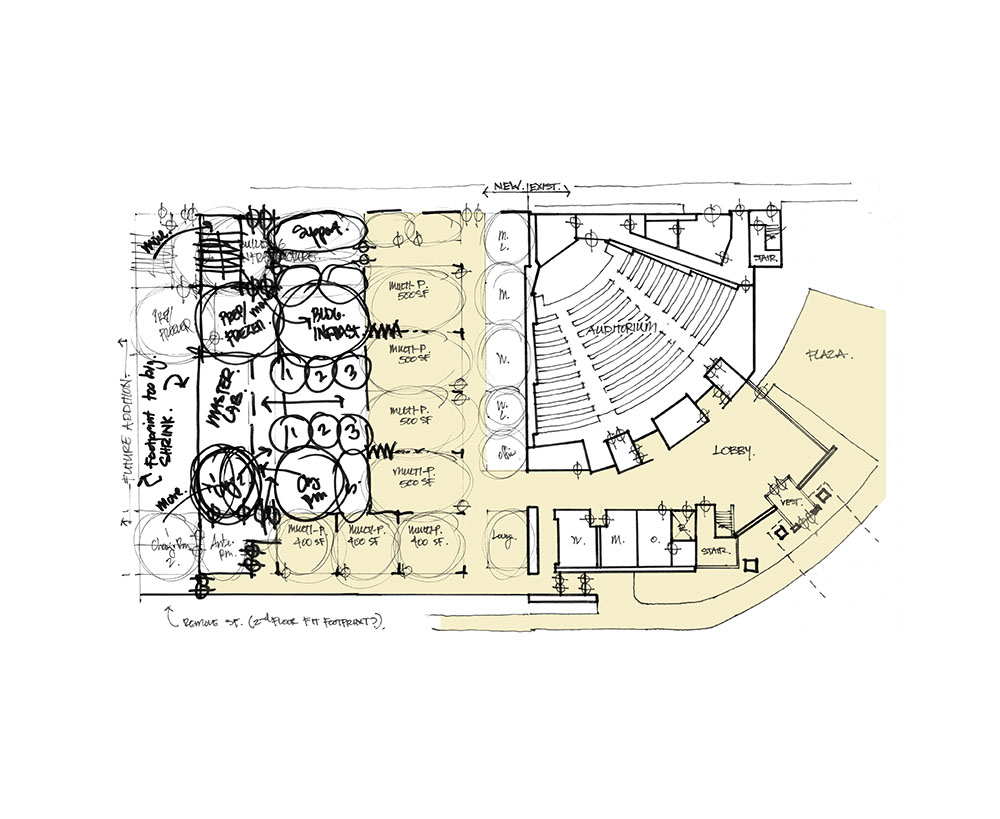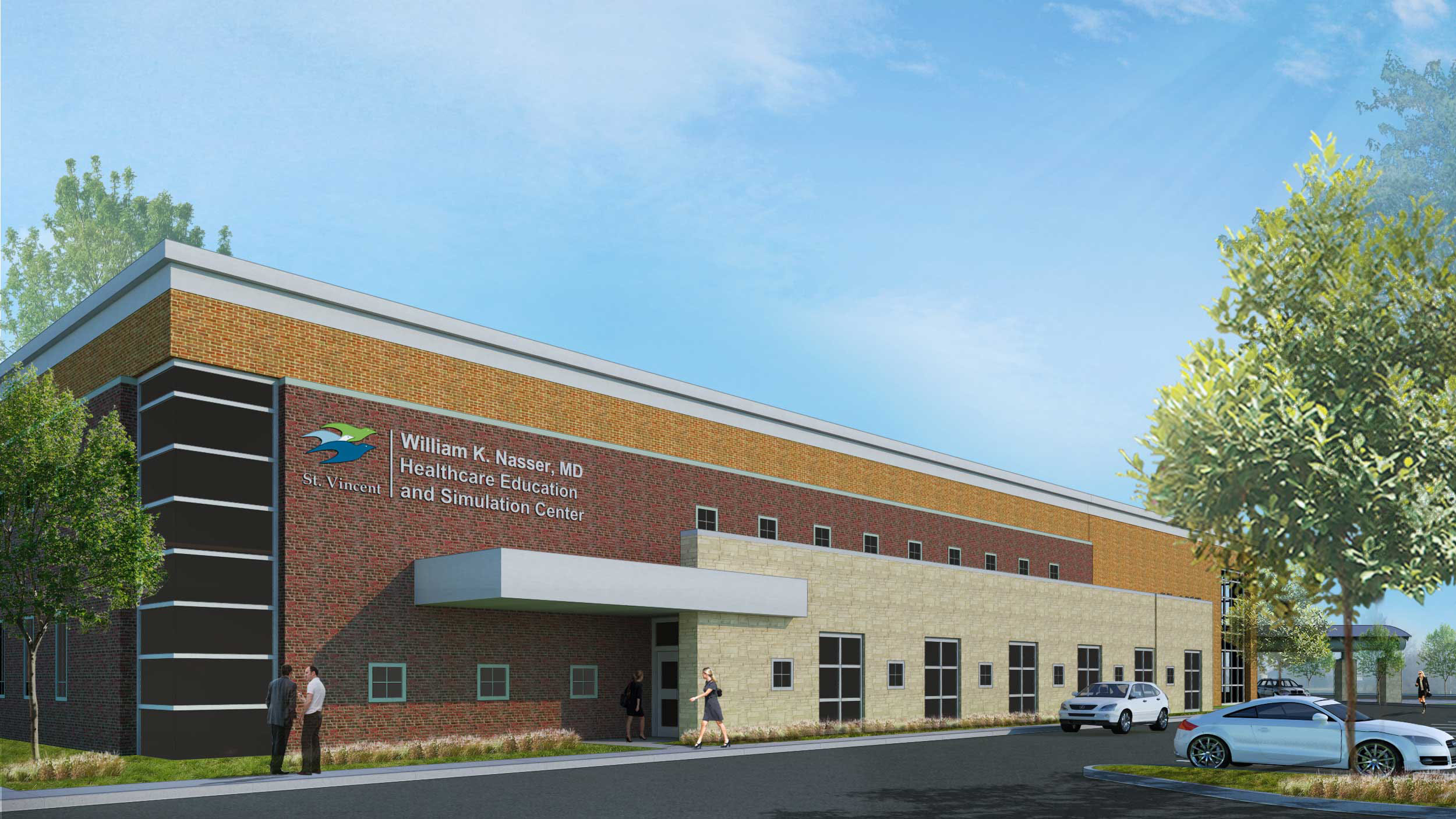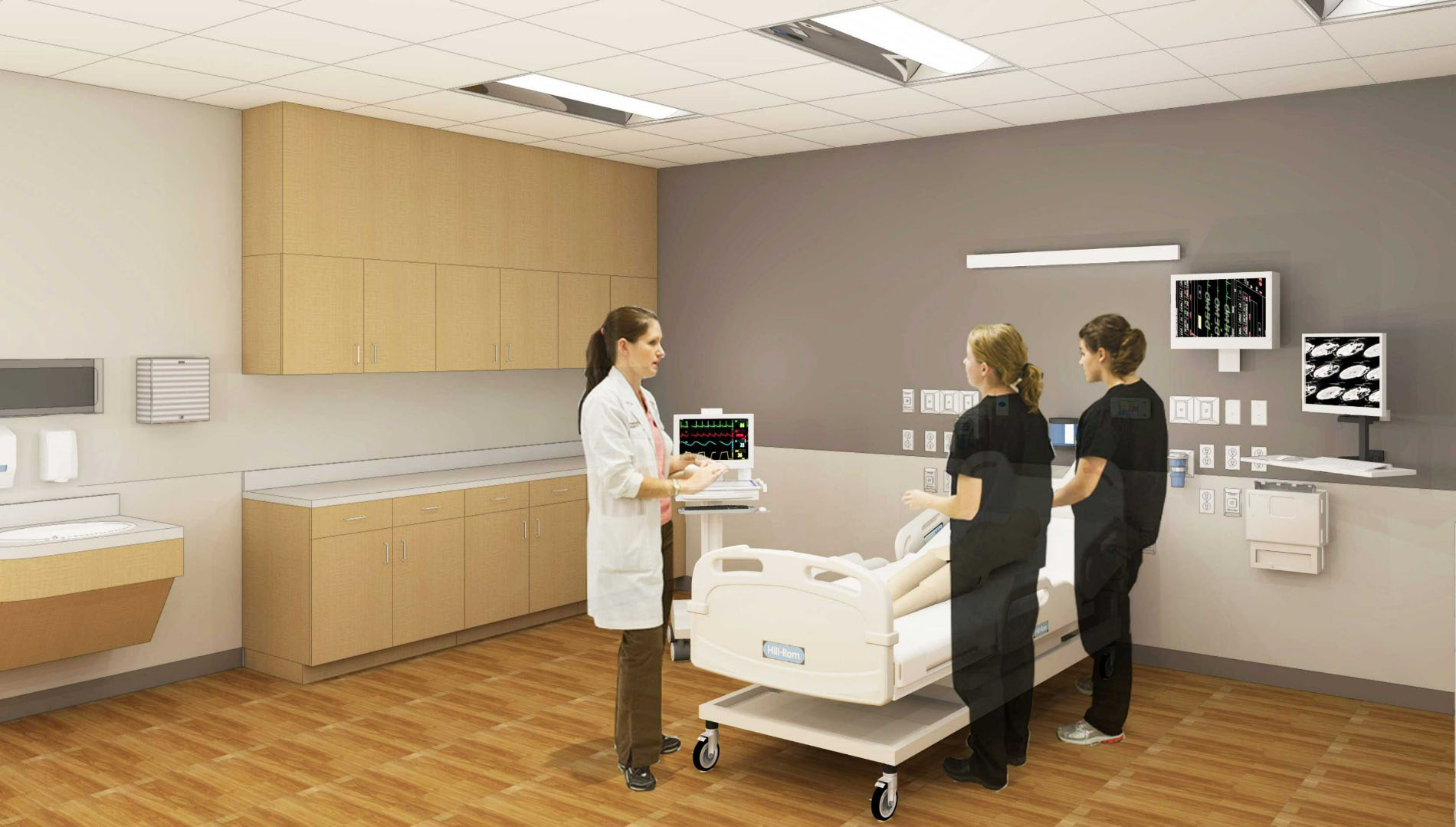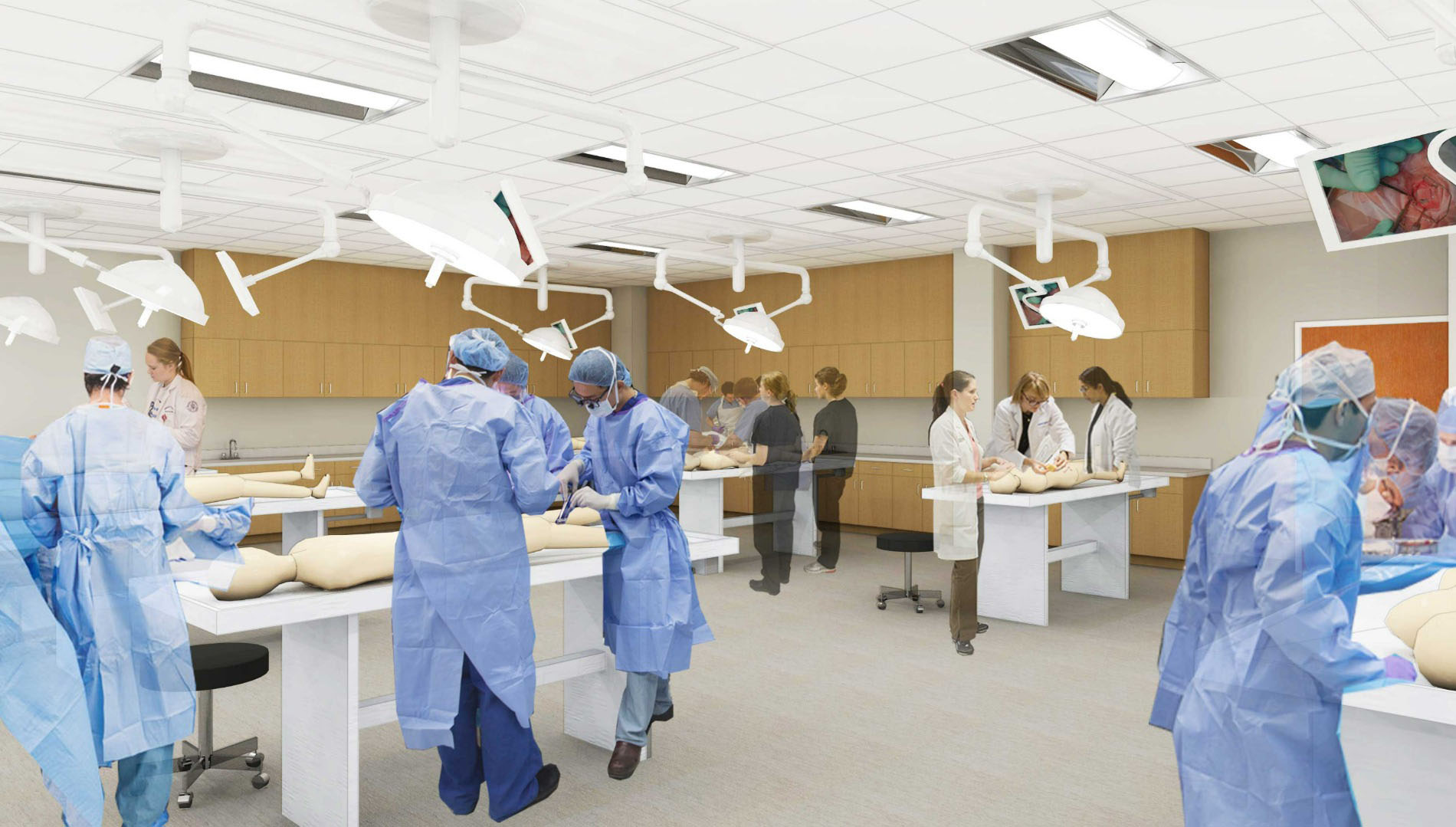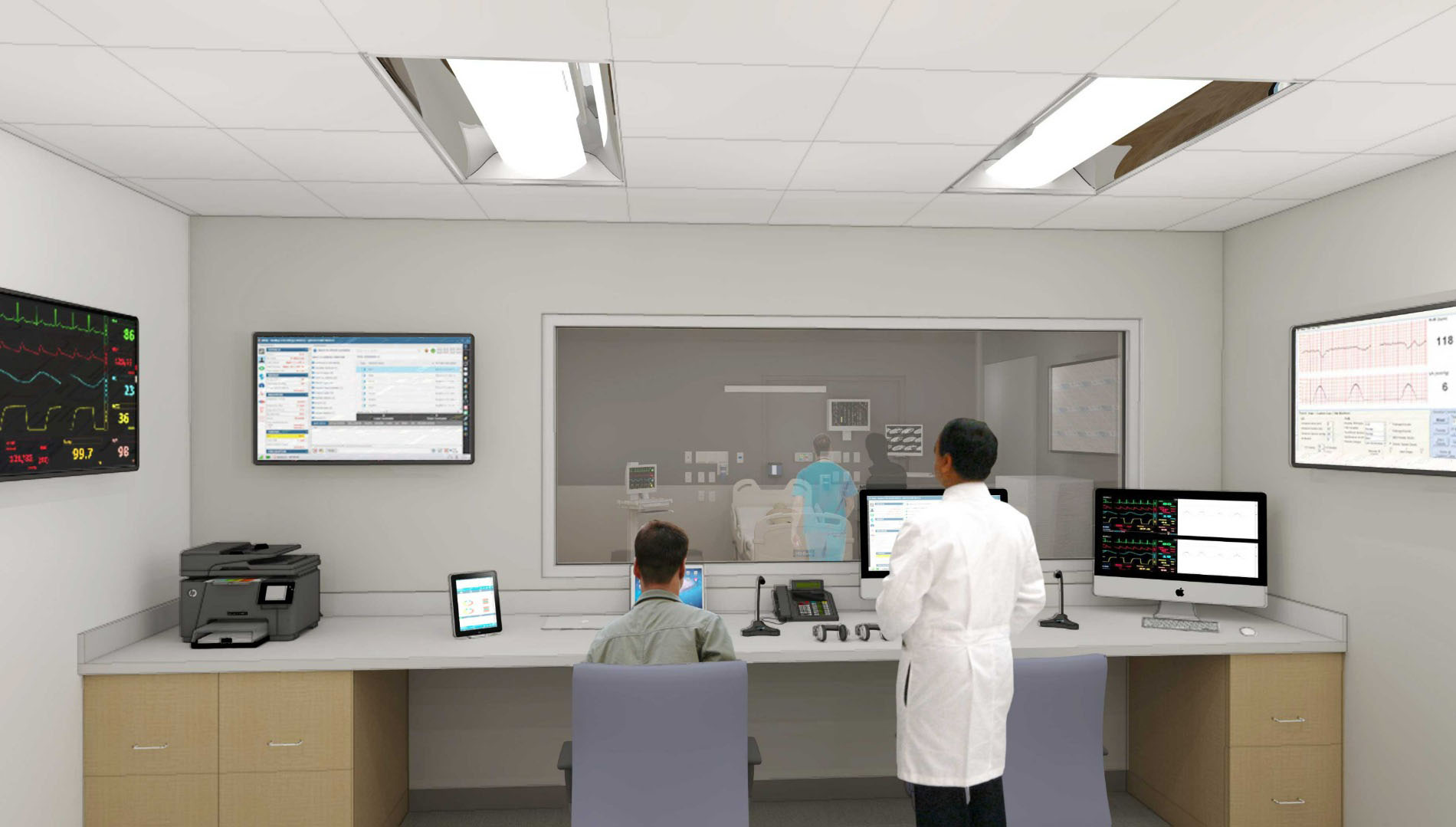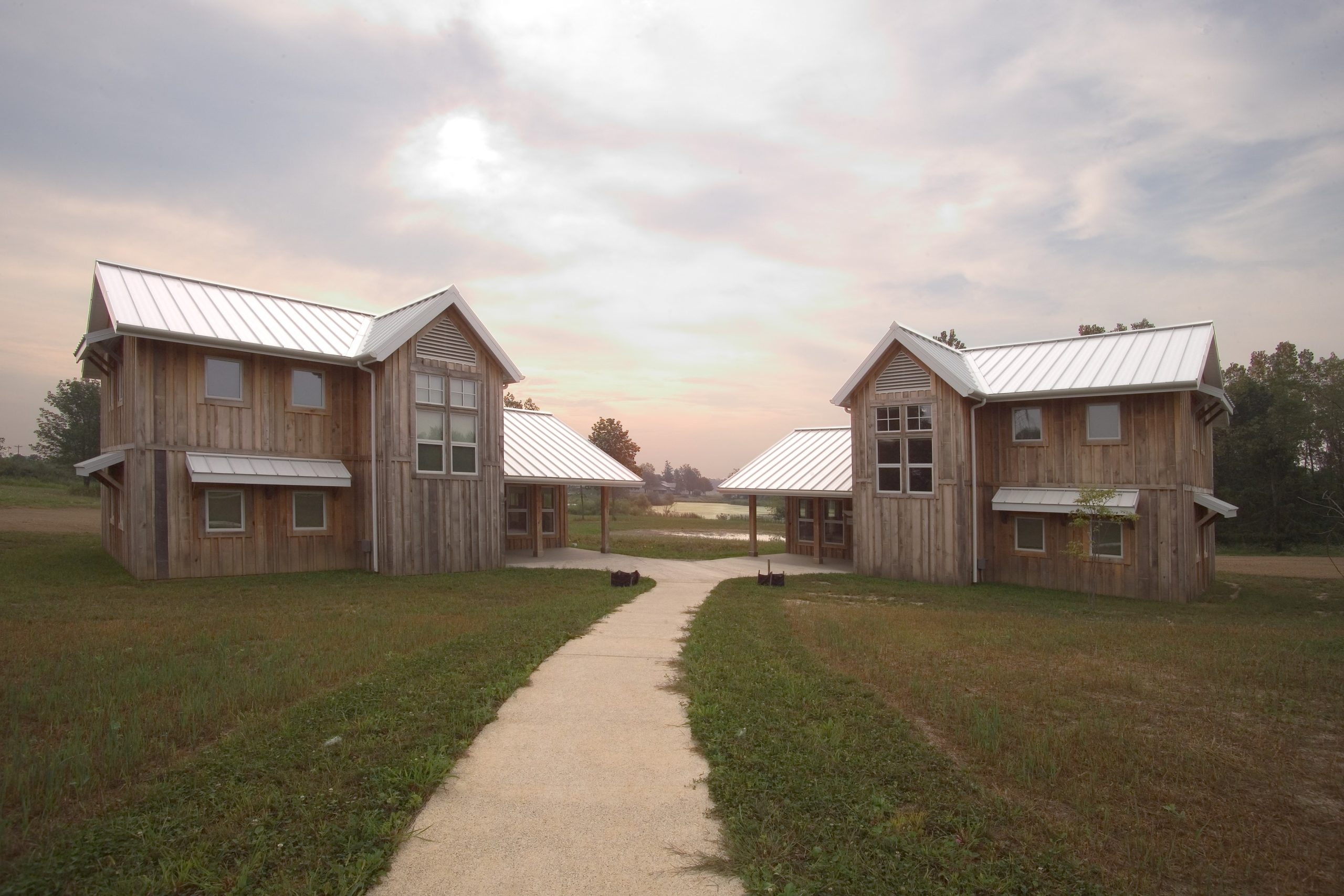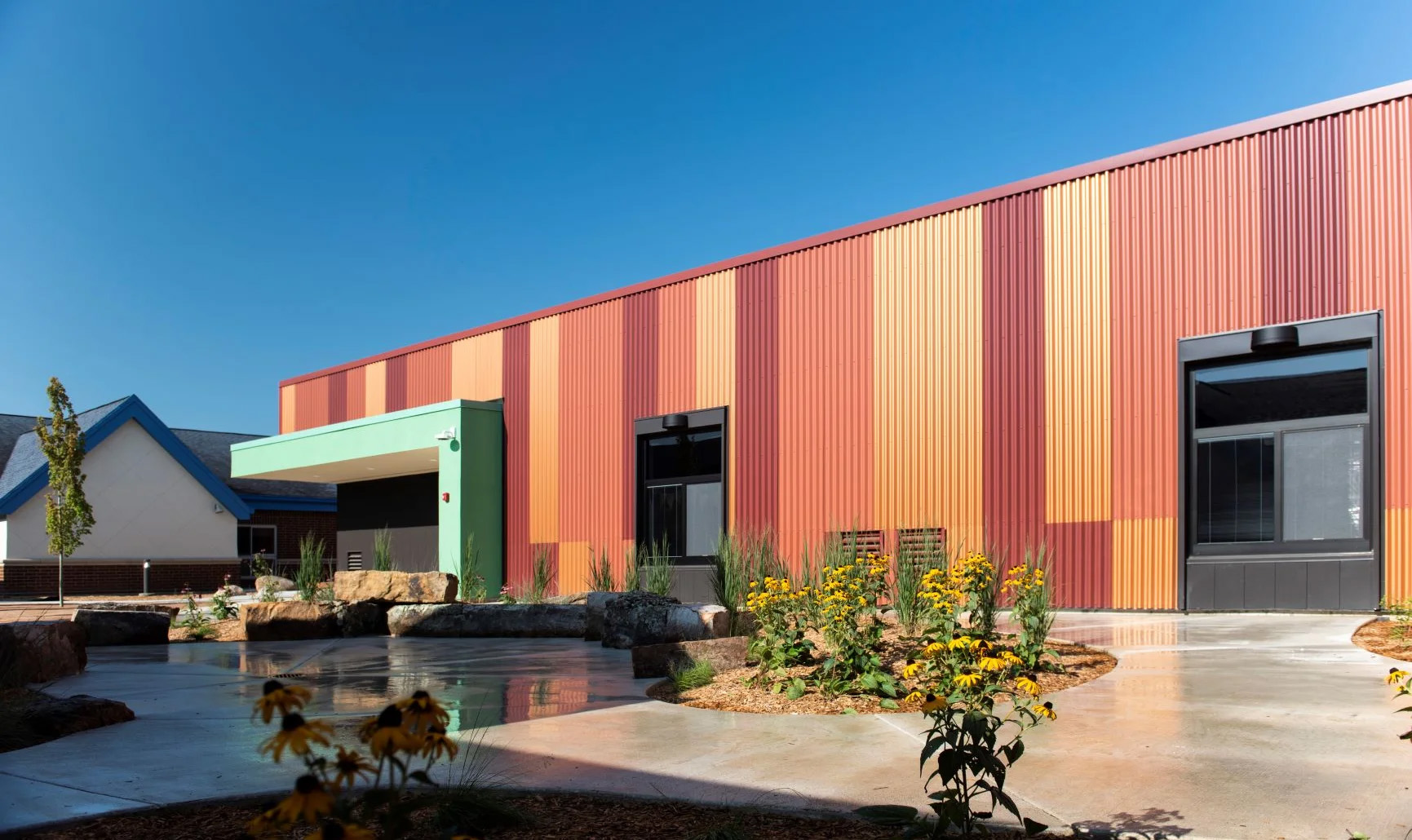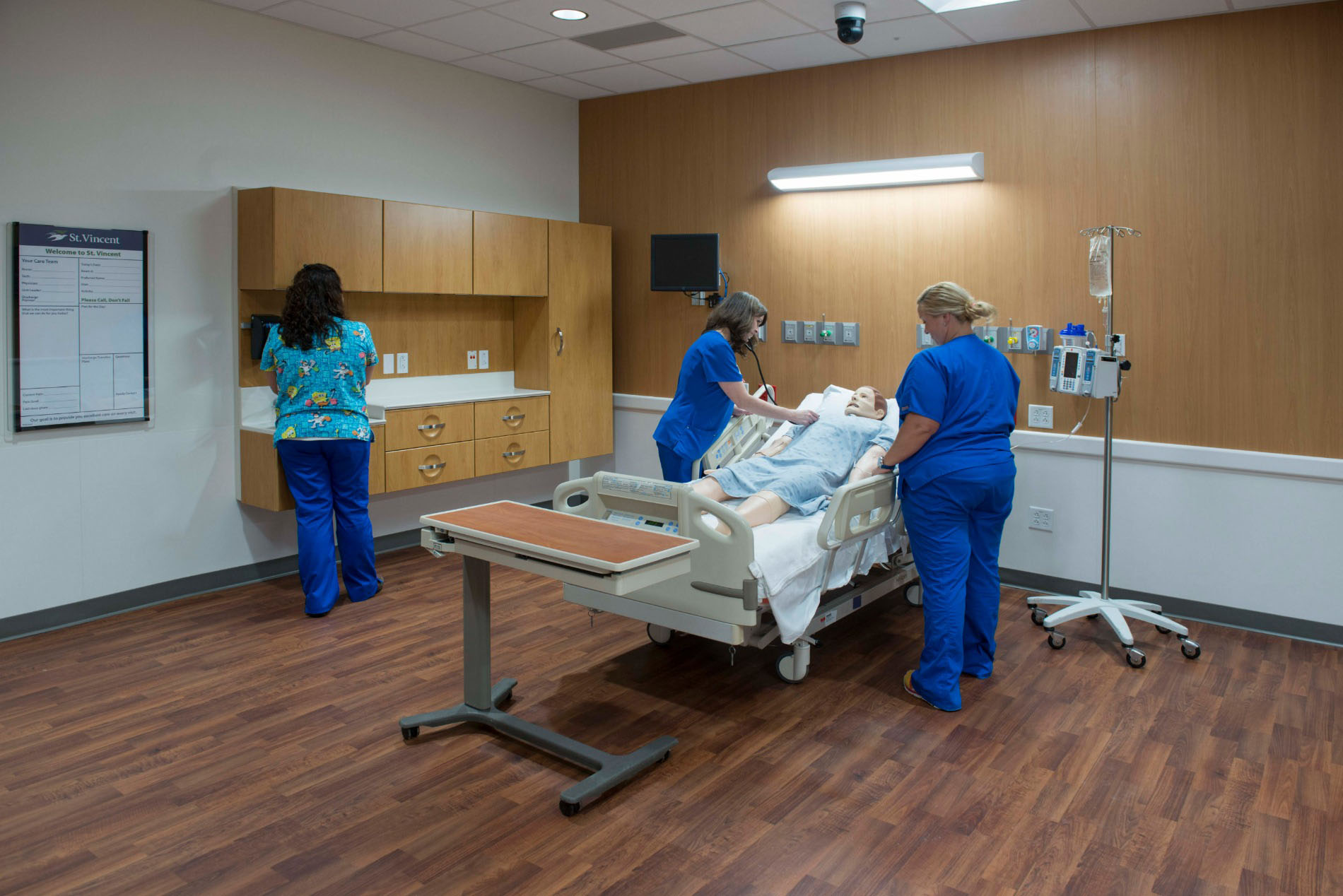
Workplace
William K. Nasser Healthcare Education and Simulation Center
Practice Makes Perfect
Indianapolis, Indiana
What if medical students could practice their technical skills in settings that look like the real thing? Ascension St. Vincent’s Simulation Center is normalizing this valuable part of healthcare education. Simulation training has been widely applied in fields such aviation and the military. Now it is becoming the standard for training of interdisciplinary medical teams. The realistic scenarios and equipment allow for retraining and practice until the procedure/skill is mastered. The shortages and turnover of students are primary reasons behind the creation of the William K. Nasser, MD Healthcare Education and Simulation Center at Ascension St. Vincent. This Simulation Center will help ensure that physicians and nurses in Indiana are provided with an exceptional level of education through simulation and team-building. Healthcare education is also an important factor in recruiting the most accomplished healthcare professionals to Indiana and retaining them. Many healthcare professionals consider factors such as the availability of high-quality learning and training opportunities when making decisions on where to practice.
The Simulation Center provides an authentic environment for learning. The project utilizes the existing 25,000 SF of the Lilly Conference Center and includes a new 30,000 SF addition for simulation and education. It features five “flexible” simulation rooms that can be modified constantly to realistically simulate an operating room, an intensive care unit, a trauma scene or a patient room. It is outfitted with high-tech, responsive manikins, and video cameras and microphones for recording, giving participants the look and feel of real patients and procedures. Control rooms and technology for observation support the learning environment which, when combined with evaluation and teaching by experienced practitioners, will provide feedback to the participants so that learning and improvement can be immediate. The William K. Nasser, MD Healthcare Education and Simulation Center also includes a cadaveric lab for surgical residents. The first-year surgical residents use the lab to prepare them for their experiences in the operating room while mid-level and senior residents continue to develop and refine their technical skills. The goal for the simulation center is that all practitioners from the new graduate to the experienced surgeon will embrace simulation as a way of life-long learning.

